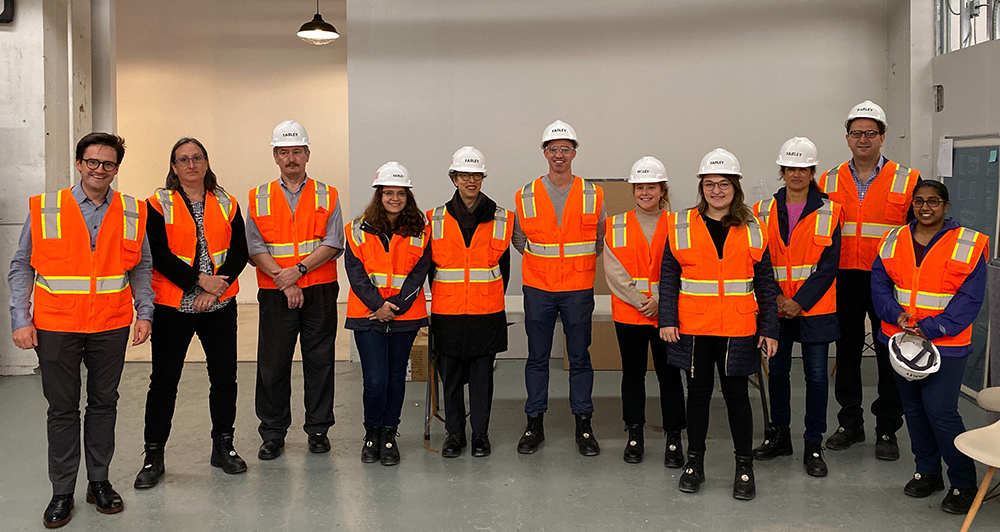Original publication by Urban Green Council • October 23, 2019
Many of us have experienced the daily chaos and overcrowding at New York’s Penn Station. But finally, an end is in sight. The James A. Farley Post Office building, a national landmark in the heart of midtown that has sat partially empty for decades, is undergoing a $1.6 billion renovation to expand Penn Station and add new retail and office space. Earlier this month, Urban Green members got an exclusive sneak peek at the building’s progress.
The ambitious project, developed by Vornado Realty Trust, The Related Companies, and Skanska USA, is expected to be open to the public by 2021. Alan Reagan, the Vice President of Development at Vornado Realty Trust, led Urban Green on a tour of the space and explained the specific design considerations and decision-making process.
At the heart of the project is the Moynihan Train Hall, a new train station which will service Amtrak and the Long Island Rail Road, decreasing the strain on Penn Station. The project will also add restaurants and retail spaces in the building for a more pleasant commuting experience. After the renovations, the post office will retain 270,000 square feet, 26 different carrier routes and the historic postal lobby.
The renovation will also add 740,000 square feet of modern office space designed to encourage creativity and community within the workplace. The building is one of the largest in Manhattan, taking up two city blocks between 8th and 9th Avenue. The resulting horizontal floor plan creates nodes and intersections that will bring people together at the heart of the space.
The Farley Post Office’s status as a national landmark on the National Register of Historic Places created some constraints in the renovation, and designers avoided making any major changes to the underlying architecture. For instance, the planned green roof is limited to a small portion of the total roof because the refinished copper roof is historic. However, the renovation will make a few major changes, including the addition of a stunning 92-foot high skylight held up by the building’s original steel trusses.
The large building will use a combination of existing and new heating systems, Reagan explained to the curious members of the tour. The property is served by district steam, which will be supplemented by natural gas to provide heat and hot water. A wide variety of classic steam radiators will stay in place to keep the office perimeters warm, while the main train hall will also have hydronic radiant floor heating. That floor was still under construction, and tour members were able to see a rainbow-colored layout indicating the planned piping runs that will carry water to heat the space. And to reduce heat loss throughout the building, 2,000 old single-pane windows are being replaced with more efficient ones.
After years of work, the major construction hurdles have been managed and operational systems such as escalators, lighting and air-handlers are ready to be tested. Within the next three months, the project developers will finish the heavier construction work and start preparing the building for interior finishes and system commissioning. And next winter, 118 years after it first opened, the Farley Building will once again open its doors to the public, welcoming thousands of train passengers, shoppers and office workers.

Further Reading
Energy upgrades in historic buildings: Hotel Marcel
How did New Haven's Hotel Marcel up its sustainability game?
Grid Ready: Powering NYC’s All-Electric Buildings
Grid Ready looks at how power is delivered to NYC and how heat pumps will change electricity demand.
Air source heat pumps: Not just a pipe dream
Air source heat pumps can help lead the transition to electrified domestic hot water systems in NYC.